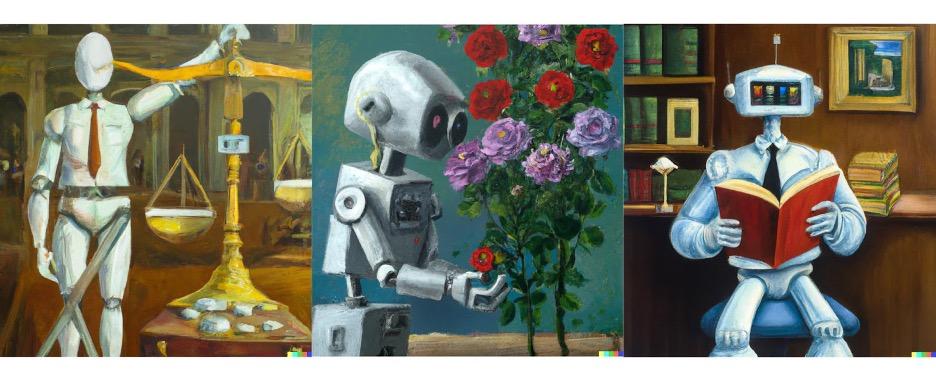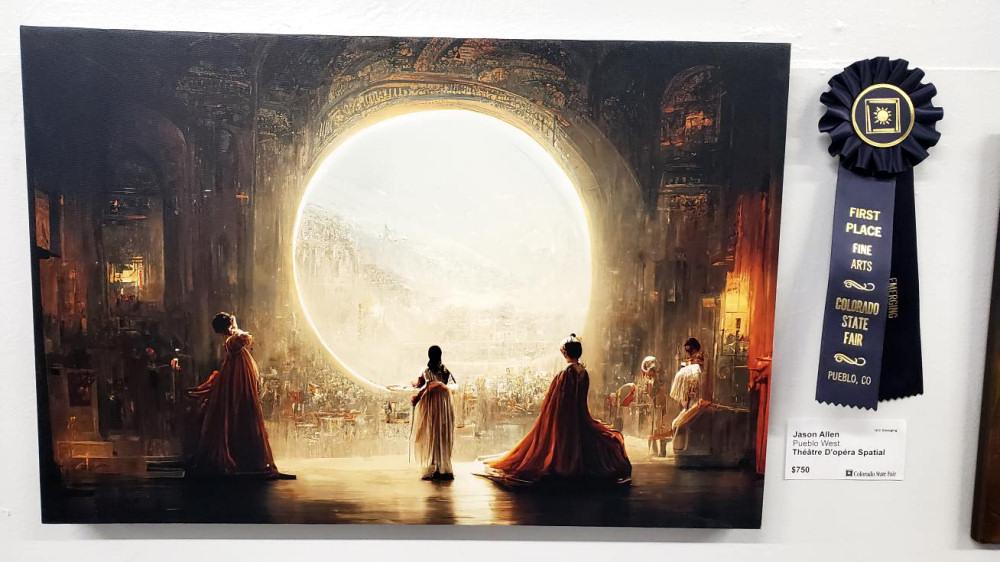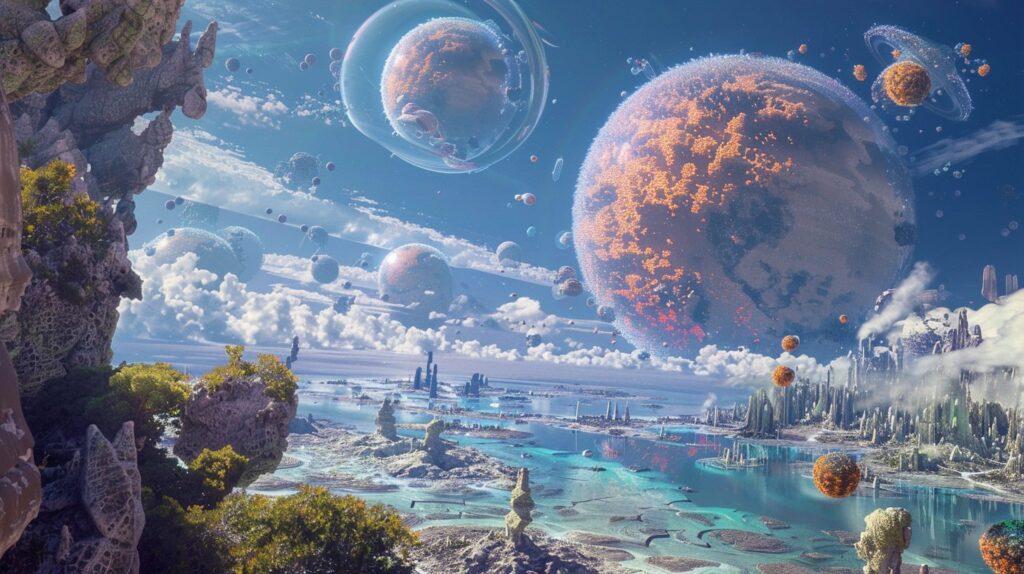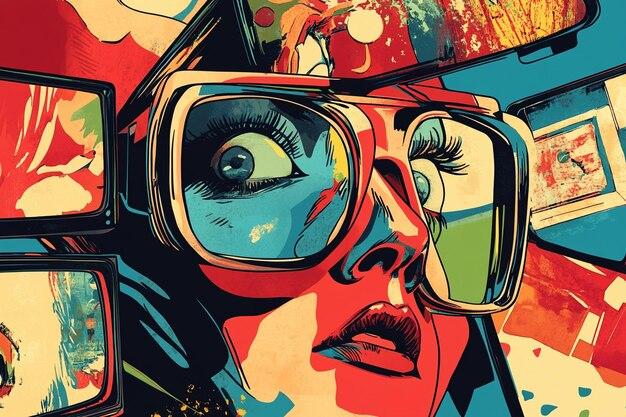In an era where algorithms paint portraits and scripts emerge from lines of code, the world of entertainment is witnessing a creative revolution unlike any before. Yet, behind the scenes of this digital renaissance lies a complex battlefield-one where the brushstrokes of artificial intelligence clash with the ink of intellectual property law. The legal war over AI-generated art in entertainment is not just a dispute over ownership; it’s a profound challenge to how we define creativity, authorship, and value in the age of machines. As studios, artists, and tech innovators navigate this uncharted territory, the rules of the creative game are being rewritten, raising questions that could shape the future of art itself.
Table of Contents
- The Rise of AI-Generated Art and Its Impact on Entertainment
- Navigating Intellectual Property Challenges in AI-Created Works
- Balancing Creativity and Ownership in the Age of Artificial Intelligence
- Legal Precedents Shaping the Future of AI Art in Media
- Best Practices for Protecting Rights and Encouraging Innovation in AI Art
- Frequently Asked Questions
- The Way Forward
The Rise of AI-Generated Art and Its Impact on Entertainment
AI-generated art has swiftly transformed from a niche curiosity into a mainstream force within the entertainment industry. What was once the realm of human creativity is now being shared-and sometimes contested-by algorithms capable of producing stunning visuals, music, and narratives at unprecedented speed. This rapid evolution has ignited a complex legal debate, challenging traditional notions of authorship, copyright, and artistic ownership.
At the heart of the legal storm lies the question: who truly owns AI-generated creations? Is it the developer who coded the algorithm, the user who guided the AI, or perhaps no one at all? Courts and lawmakers worldwide grapple with these questions, often with conflicting rulings. The entertainment sector, which thrives on intellectual property rights, faces the daunting task of adapting to a future where the boundaries between human and machine creativity are increasingly blurred.
- Copyright Ambiguity: Existing laws struggle to define AI’s creative output, leading to uncertainty in licensing and royalties.
- Ethical Concerns: The use of AI to replicate styles of living artists raises questions about consent and artistic integrity.
- Economic Impacts: The democratization of art creation threatens traditional creative jobs but also opens new avenues for innovation.
| Stakeholder | Primary Concern | Potential Outcome |
|---|---|---|
| Artists | Loss of control over their style and income | Push for stronger copyright protections |
| AI Developers | Liability for generated content | Clear legal frameworks for AI authorship |
| Entertainment Companies | Monetizing AI art without infringing rights | New licensing models and partnerships |

Navigating Intellectual Property Challenges in AI-Created Works
As artificial intelligence continues to revolutionize the entertainment industry, the question of who owns the rights to AI-generated art becomes increasingly complex. Traditional intellectual property (IP) laws were designed with human creators in mind, creating a legal gray area when it comes to works produced by algorithms. This ambiguity leads to disputes over copyright ownership, royalties, and the very definition of creativity.
One major challenge lies in determining authorship. Is it the programmer who designed the AI, the user who inputs the parameters, or the AI itself? Current legal frameworks generally exclude non-human entities from holding copyrights, but as AI-generated content becomes more sophisticated, courts and lawmakers are pressured to adapt. This tension results in conflicting rulings across jurisdictions and unpredictable outcomes for creators and studios alike.
Beyond authorship, there’s the problem of infringement risks. AI systems often train on vast datasets that may include copyrighted material, raising concerns about unauthorized use. Studios must navigate careful licensing agreements and consider the ethical implications of using AI-generated art. These factors make it essential to develop clear guidelines that balance innovation with respect for existing IP rights.
| Aspect | Key Concern | Potential Solution |
|---|---|---|
| Authorship | Defining creator of AI art | Legislation recognizing human-AI collaboration |
| Copyright | Ownership rights of generated works | Clear licensing models |
| Infringement | Use of copyrighted training data | Transparent data sourcing |
| Monetization | Royalties and profit sharing | New frameworks for AI-generated content |
- Collaborative ownership models where multiple stakeholders share rights.
- Transparent AI training practices to minimize infringement risks.
- Updated IP laws that reflect the realities of AI creativity.
- Industry standards for ethical AI use in content creation.

Balancing Creativity and Ownership in the Age of Artificial Intelligence
As AI-generated art becomes increasingly sophisticated, the entertainment industry finds itself at a crossroads where innovation clashes with traditional notions of ownership. Creativity, once a solely human domain, is now shared with algorithms capable of producing stunning visuals, music, and narratives at unprecedented speeds. This shift provokes critical questions: who truly owns the output when a machine contributes to the creative process, and how can artists protect their rights without stifling technological progress?
The balance between fostering innovation and safeguarding intellectual property requires nuanced legal frameworks. On one hand, AI tools amplify human creativity, offering new mediums and ideas that were previously unattainable. On the other, the lack of clear guidelines risks undermining the value of original human contributions. This tension is reflected in ongoing disputes over copyright claims, where courts grapple with whether AI-generated content qualifies for protection and if so, under whose name.
Key considerations in this evolving landscape include:
- Defining authorship: distinguishing between the programmer, the user, and the AI itself
- Licensing models: creating flexible agreements that reflect collaborative creation
- Ethical transparency: disclosing AI involvement to maintain audience trust
| Aspect | Human Artist | AI Contribution | Legal Implication |
|---|---|---|---|
| Creation | Original conception | Generates variations | Joint authorship debates |
| Control | Decision-making | Algorithmic processing | Ownership ambiguity |
| Recognition | Credited publicly | Typically uncredited | Challenges in attribution |
Ultimately, the path forward lies in embracing a collaborative mindset where AI is not a threat but a partner in creation. Legal systems must evolve to protect human ingenuity while encouraging technological advancement, crafting a future where creativity and ownership coexist harmoniously in the digital age.
Legal Precedents Shaping the Future of AI Art in Media
As AI-generated art blurs the lines between human creativity and machine output, courts worldwide are grappling with how to apply traditional copyright frameworks to this new frontier. Landmark cases are beginning to establish that ownership and authorship in AI art cannot be treated as straightforward as conventional works. The question of whether an AI can be considered an author or if the credit belongs solely to the programmer or user has ignited fierce debates among legal experts and creatives alike.
Several rulings have underscored the importance of human involvement in the AI art creation process. For instance, some courts have ruled that when the AI acts merely as a tool under human direction, the resulting work qualifies for copyright protection. Conversely, when AI generates art autonomously without meaningful human input, it may fall outside the scope of current intellectual property protections, potentially landing in the public domain.
Below is a summary of key legal stances emerging from recent court decisions:
- Human Authorship Required: Courts recognize copyrights only if a human exerts creative control.
- AI-Generated as Public Domain: Fully autonomous AI creations often lack copyright protection.
- Licensing Complexities: Software licenses and data training sets increasingly influence ownership rights.
- Derivative Works Challenges: Determining infringement when AI art closely resembles copyrighted material is a growing concern.
These precedents hint at a legal landscape in flux, where traditional definitions of creativity and ownership are being redefined. Entertainment companies leveraging AI art must navigate these evolving rulings carefully to avoid costly litigation and ensure proper licensing agreements are in place.
| Case | Jurisdiction | Key Ruling | Impact |
|---|---|---|---|
| Smith v. AI Creative | USA | Human input required for copyright | Limits autonomous AI claims |
| Lee v. ArtBot | EU | AI art without human authorship is public domain | Encourages open use, risks misuse |
| Kumar v. MediaWorks | India | Licensing agreements govern ownership | Focus on contractual clarity |

Best Practices for Protecting Rights and Encouraging Innovation in AI Art
Balancing the protection of creators’ rights with the encouragement of innovation in AI-generated art requires a multifaceted approach. First and foremost, establishing clear and adaptable legal frameworks is crucial. These frameworks should recognize the collaborative nature of AI as a tool, rather than a sole creator, and ensure that human artists retain control over the creative process. This clarity helps prevent ambiguous ownership disputes and supports fair attribution.
Integrating transparent licensing models can foster trust and collaboration between AI developers, artists, and entertainment companies. By adopting licenses that specify how AI-generated content can be used, modified, or commercialized, stakeholders can reduce conflicts and encourage responsible innovation. Open dialogue between technology creators, legal experts, and artists will also facilitate evolving guidelines that keep pace with rapid advancements.
Moreover, incentivizing innovation while respecting rights involves investing in educational initiatives that empower artists with AI tools without compromising their originality. This includes workshops on ethical AI usage, intellectual property rights, and collaborative technologies. Combining education with technological safeguards like watermarking or provenance tracking can create a robust ecosystem where innovation thrives alongside respect for creators’ contributions.
| Best Practice | Benefit |
|---|---|
| Clear Legal Definitions | Reduces ownership disputes |
| Transparent Licensing | Encourages collaborative use |
| Educational Programs | Empowers ethical AI adoption |
| Technological Safeguards | Ensures content authenticity |
Frequently Asked Questions
Q&A: The Legal War Over AI-Generated Art in Entertainment
Q1: What is AI-generated art, and why has it become a hot topic in entertainment?
A1: AI-generated art refers to creative content-such as images, music, scripts, or visual effects-produced with the assistance of artificial intelligence algorithms. In entertainment, it’s a game-changer, enabling faster production and novel artistic styles. However, its rise has sparked debate over authorship, copyright, and the future of human creativity.
Q2: What are the main legal issues surrounding AI-generated art in entertainment?
A2: The core legal conflicts revolve around copyright ownership, intellectual property rights, and attribution. Since AI can autonomously create works, questions arise: Who owns the rights-the programmer, the user, or the AI itself? Also, is AI-generated content eligible for copyright protection, and how does it affect existing creatives?
Q3: Have there been any landmark cases or disputes related to AI art in this industry?
A3: Yes, several lawsuits have emerged where artists and studios challenge the use of AI-generated visuals or scripts that closely mimic human-made works. Some cases focus on alleged copyright infringement, especially when AI models are trained on copyrighted material without consent. These legal battles are setting precedents for how AI art is treated under the law.
Q4: How are entertainment companies responding to these legal challenges?
A4: Companies are adopting a cautious approach-some lobby for clearer regulations, while others establish internal guidelines for AI use. Many studios are investing in hybrid models, blending human creativity with AI tools to balance innovation and legal compliance. Licensing agreements and transparency about AI’s role are becoming standard practices.
Q5: What impact could this legal war have on artists and creators?
A5: The outcome could redefine creative ownership and revenue streams. If AI-generated art is deemed copyrightable with human authorship, creators might enjoy new collaborative opportunities. Conversely, if AI works are unprotected or overly controlled, it could marginalize human artists or flood the market with unregulated content, challenging originality and fair compensation.
Q6: Are there any international differences in how AI art is treated legally?
A6: Absolutely. Jurisdictions vary widely-some countries have begun drafting specific AI intellectual property laws, while others apply traditional copyright frameworks. This patchwork creates complexity for global entertainment projects, requiring nuanced legal strategies to navigate cross-border rights and protections.
Q7: What might the future hold for AI-generated art in entertainment law?
A7: The legal landscape is evolving rapidly. We can expect new legislation, clearer definitions of authorship, and possibly AI-specific copyright categories. Industry collaboration with policymakers will be key to balancing innovation, creativity, and legal fairness. Ultimately, this “legal war” could forge a new creative frontier where humans and machines coexist as artists.
Q8: How can creators protect themselves amid this uncertainty?
A8: Staying informed and consulting intellectual property experts is crucial. Creators should document their contributions, understand the AI tools they use, and negotiate clear contracts addressing AI-generated content rights. Building awareness helps artists safeguard their work and adapt to the shifting legal terrain.
This Q&A unpacks the intricate legal battles shaping AI-generated art in entertainment, highlighting the challenges and opportunities ahead with a balanced, creative lens.
The Way Forward
As the brushstrokes of technology and creativity continue to blend in the canvas of entertainment, the legal battles over AI-generated art remind us that innovation often arrives hand in hand with complexity. Navigating this uncharted territory requires thoughtful dialogue, balanced regulations, and a willingness to redefine authorship in an age where machines can create alongside humans. Whether AI becomes a collaborator, a competitor, or a catalyst for a new artistic renaissance, the unfolding legal saga will undoubtedly shape the future of creativity as we know it-challenging us to rethink not just art, but the very nature of originality itself.

